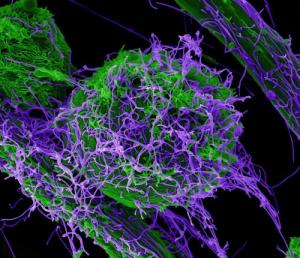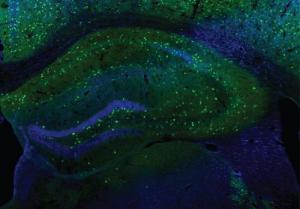Health
Digital app released to boost physical activity – and help get children moving
On the eve of the FIFA World Cup Qatar 2022™, the World Health Organization, the Ministry of Public Health of Qatar and FIFA are launching a new digital app designed to help increase physical activity and improve the health and well-being of millions of young people.
- Read more
- 308 reads
WHO to identify pathogens that could cause future outbreaks and pandemics
WHO is launching a global scientific process to update the list of priority pathogens—agents that can cause outbreaks or pandemics—to guide global investment, research and development (R&D), especially in vaccines, tests and treatments.
- Read more
- 312 reads
Study challenges “good” cholesterol’s role in universally predicting heart disease risk
A National Institutes of Health-supported study found that high-density lipoprotein (HDL) cholesterol, often called the “good cholesterol,” may not be as effective as scientists once believed in uniformly predicting cardiovascular disease risk among adults of different racial and ethnic backgrounds.
- Read more
- 317 reads
NIH awards $12 million for antiviral therapeutic development

Scanning electron micrograph of Ebola virus particles (purple) both budding and attached to the surface of infected VERO E6 cells (green).
- Read more
- 362 reads
NIH researchers unlock pattern of gene activity for ADHD
Researchers at the National Institutes of Health have successfully identified differences in gene activity in the brains of people with attention deficit hyperactivity disorder (ADHD). The study, led by scientists at the National Human Genome Research Institute (NHGRI), part of NIH, found that individuals diagnosed with ADHD had differences in genes that code for known chemicals that brain cells use to communicate. The results of the findings show how genomic differences might contribute to symptoms.
- Read more
- 301 reads
NIH study in mice provides insight into how brain activity is fine-tuned

Interneurons (green) in the hippocampus of a mouse. These cells play a subtle but powerful role in balancing neural activity during the sleep-wake cycle.Lu lab, NIH/NINDS
- Read more
- 292 reads
NIH study in mice provides insight into how brain activity is fine-tuned

Interneurons (green) in the hippocampus of a mouse. These cells play a subtle but powerful role in balancing neural activity during the sleep-wake cycle.Lu lab, NIH/NINDS
- Read more
- 275 reads
NIH-funded study finds personalized kidney screening for people with type 1 diabetes could reduce costs, detect disease earlier
Taking a personalized approach to kidney disease screening for people with type 1 diabetes (T1D) may reduce the time that chronic kidney disease (CKD) goes undetected, according to a new analysis performed by the Epidemiology of Diabetes Interventions and Complications study group, which is funded by the National Institute of Diabetes and Digestive and Kidney Diseases (NIDDK), part of the National Institutes of Health.
- Read more
- 333 reads
WHO updates recommendations to guide family planning decisions
Nov.,15, the World Health Organization (WHO) released important updates to its landmark Family Planning Handbook, which provides health workers and policy makers with the most current information on contraceptive options.
- Read more
- 358 reads
WHO advises immediate skin to skin care for survival of small and preterm babies
WHO Nov.15 launched new guidelines to improve survival and health outcomes for babies born early (before 37 weeks of pregnancy) or small (under 2.5kg at birth).
- Read more
- 291 reads
Human Rights
Fostering a More Humane World: The 28th Eurasian Economic Summi

Conscience, Hope, and Action: Keys to Global Peace and Sustainability

Ringing FOWPAL’s Peace Bell for the World:Nobel Peace Prize Laureates’ Visions and Actions

Protecting the World’s Cultural Diversity for a Sustainable Future

Puppet Show I International Friendship Day 2020

